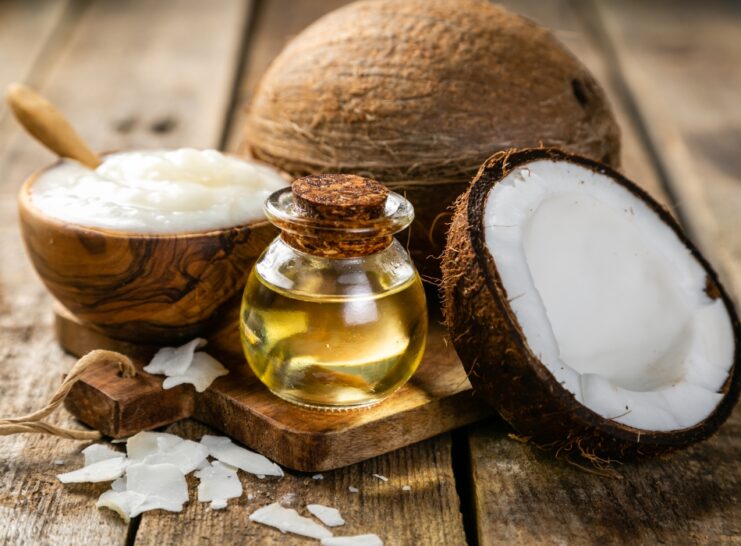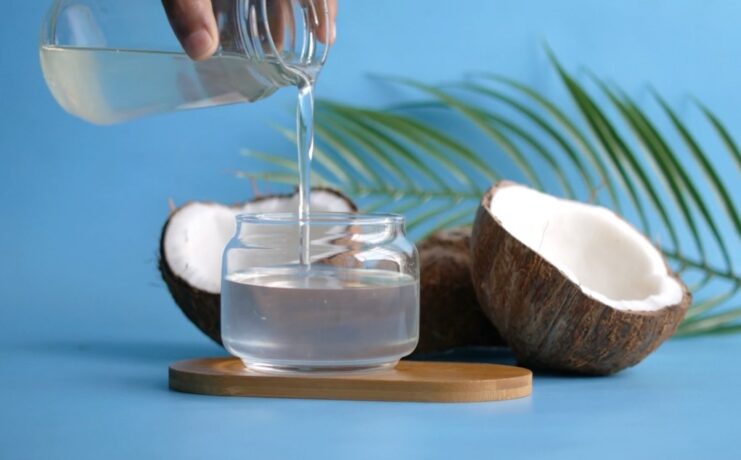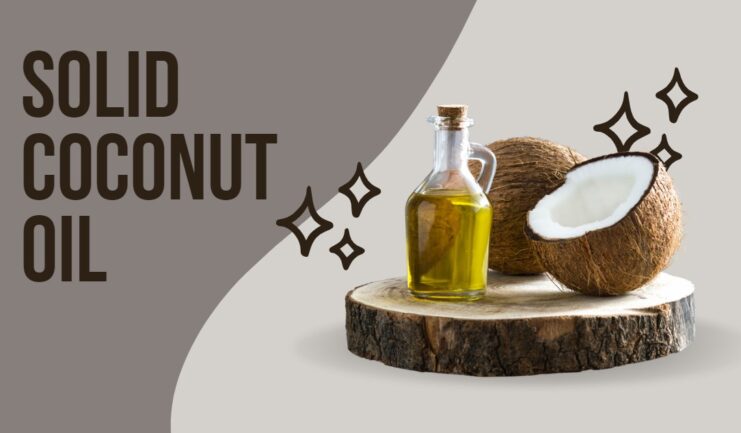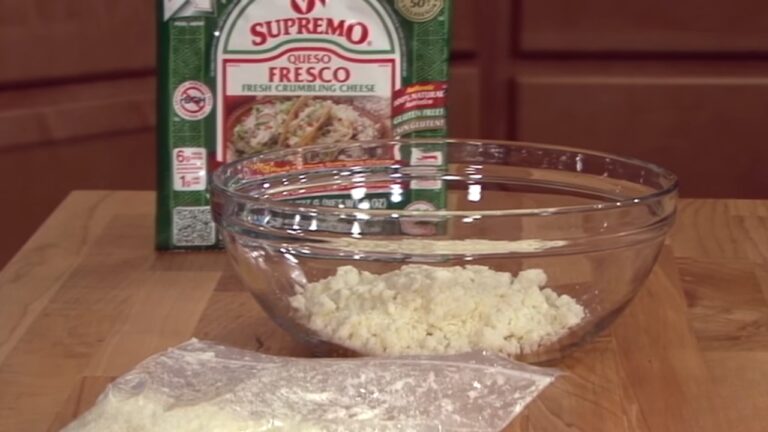Coconut oil has become a staple in my kitchen due to its versatility and the well-known health benefits it offers. Yet, many people, especially those new to using coconut oil, might be surprised to find it hard and solid after being stored or cooled.
Generally, it stays liquid at warm or hot temperatures and solidifies when cool.
The following techniques I will provide you with will help maintain the oil in a more usable, liquid state, enhancing your cooking experience without the hassle of dealing with a solid state.
How to Keep It Liquid?

Coconut oil is becoming increasingly popular for its multitude of uses and health benefits, but when it’s in its solid form, it isn’t always optimal for use. Therefore, it’s important to know how to keep coconut oil in its liquid form without it going hard.
To ensure it stays liquid, even when temperatures drop, here are some effective strategies:
Store in a Cool, Dark Place
Keeping a jar of it in your pantry is an ideal way to ensure that it remains liquid.
Generally, it should be kept away from direct sunlight, which will cause it to harden. It should also not be left near heat sources such as a stove or radiator as this can make it soft and runny.
If you do not have a cool and dark pantry available at home then consider storing the jar in the refrigerator where temperatures are low.
It is important to note that it does not like extreme temperatures, so avoid putting it in the freezer or leaving it outside for prolonged periods of time.
If storing it in the cupboard or on a shelf then additional tips include using an airtight container and checking periodically for any discoloration exposed to warmth or light.
Placing a small piece of wax paper over the surface of stored coconut oil can also prevent bacteria growth, making it last even longer.
If you’re looking to preserve the freshness of brewed coffee, store it in an airtight container away from light and heat, ensuring it stays flavorful for longer periods.
Place in a Sealed Container

Coconut oil is a rather unique substance. It is solid at room temperature and when exposed to temperatures below 76°F, it will become hard and need to be melted in order to be used. Fortunately, there are ways you can keep your coconut oil liquid without having it go hard.
One of the best ways to ensure your coconut oil stays liquid is by placing it in an airtight container that keeps the humidity out and the temperature more consistent.
By doing this, you can prevent any external influences from changing the texture, allowing it to remain in its liquid form for longer periods of time.
Avoid letting direct sunlight or any other source of warm air come into contact with your container as this could cause the coconut oil to become too hot or melt completely.
Add a Few Drops of Essential Oil

The high concentration of saturated fats presents many benefits but also poses a challenge when trying to maintain it in liquid form.
Coconut oil tends to solidify at temperatures below 76°F (24°C), which can be inconvenient for those needing it in a liquid state for various uses.
To address this issue, adding a few drops of essential oil to melted coconut can prevent it from solidifying. It’s crucial to select essential oils that are non-toxic and safe for internal use if you intend to consume coconut oil.
Some suitable options are:
- Lemon: Known for its clean, refreshing scent and antiseptic properties, it mixes well and adds a pleasant aroma.
- Peppermint: Besides its invigorating scent, peppermint can aid digestion, making it a good companion for culinary uses.
- Lavender: Widely used for its calming and relaxing effects.
Although less practical, you could store the coconut oil in a container placed in warm water or wrap it in towels that have been soaked in hot water.
The Bottom Line

Overall, coconut oil usually hardens below room temperature but it can be kept in liquid form if stored properly.
You can accomplish this by placing a jar of coconut oil in warm water or using leftovers from cooking as an alternative to melting the solidified coconut oil.
You can keep smaller portions of liquid coconut oil in the refrigerator, blend it with different ingredients to create liquid mixtures, and cook recipes at low temperatures.
Related Posts:
- Pit Boss 820 Review And Buying Guide 2023 - Easy Way…
- How to Use a Smoker Box Properly and Safely?
- How To Store Brewed Coffee & Keep It Fresh: Preserve…
- How to Use a Charcoal Chimney Starter Like a Pro?
- 6 Best Substitute For Dill In Pickles And Other Dishes
- How To Store Ravioli and Have No More Soggy Pasta











